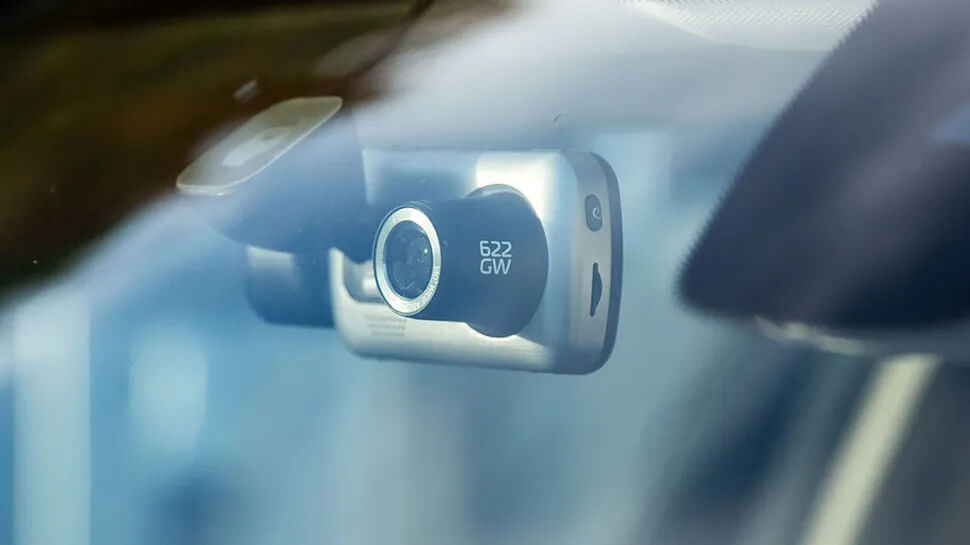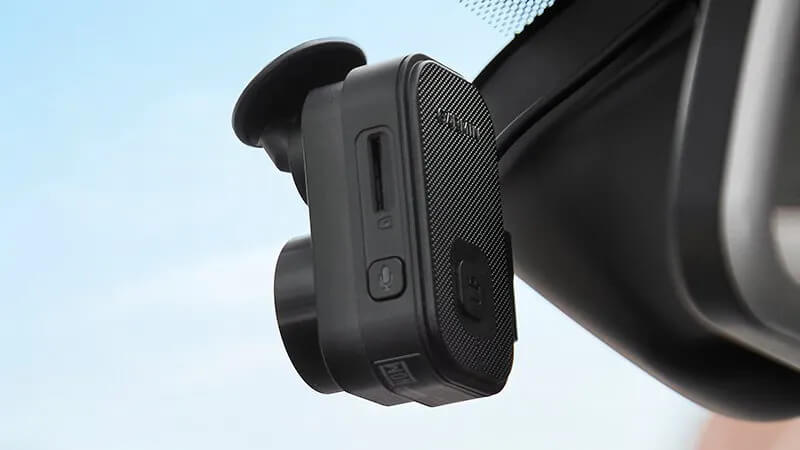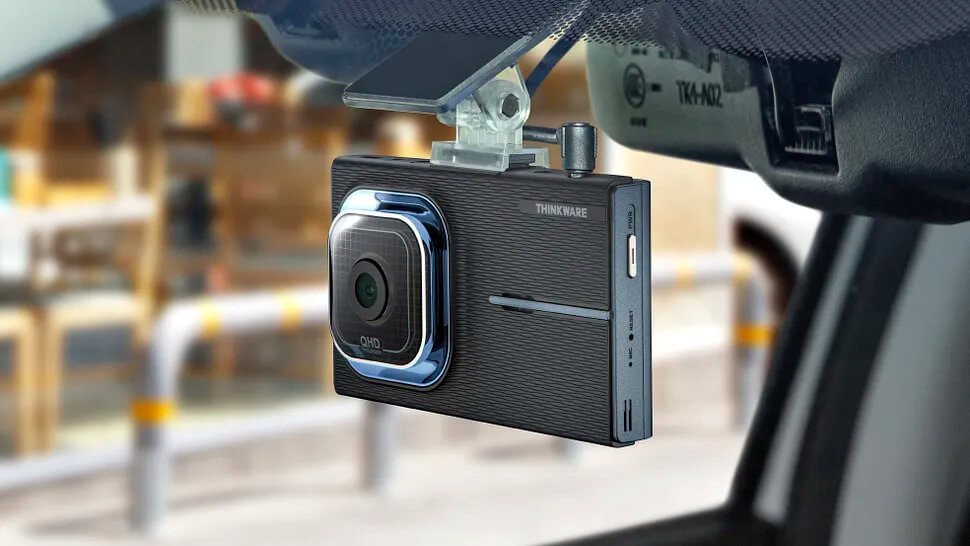Accidents can happen quickly, and you don’t want to make the situation worse by getting in trouble for something that wasn’t your fault. That’s where a dash cam can help. It records what happens while you’re driving, so if something bad happens, you’ll have proof that it wasn’t your fault. Plus, it might even make your insurance cost less.
No matter how much money you have to spend, what you need, or how much you know about this stuff, there’s a good choice for you in this guide. If you have a lot of money to spend, we recommend the Nextbase 622GW. But if you’re on a budget, the Garmin Dash Cam Mini 2 is a great choice.
The Best Dash Cam

Nextbase 622GW
The Nextbase 622GW is currently the top dash cam you can purchase, offering outstanding 4K video quality and a range of excellent features.
Video quality: 4K
Viewing angle: 140 degrees
GPS tracker: Yes
Memory: MicroSD card (not included)
Offering impressive video quality and a feature-packed design, the Nextbase 622GW stands out as the best dash cam currently available. During our testing, we were particularly impressed with its 4K/30p video footage, which exhibited a nearly cinematic quality with sharp clarity and exceptional detail. The dash cam’s algorithms for low-light and adverse weather conditions also significantly improved the quality of the recorded footage in challenging situations. If you switch to 1080p resolution, you can capture 120fps slow-motion video, making it easier to identify details like license plate numbers.
While the setup process was somewhat intricate, and the 3-inch touchscreen required clear swipe inputs, we found the 622GW to be a user-friendly camera overall. Its interface was intuitive, and the large, sharp, and clear display made navigating settings and reviewing footage straightforward. The camera automatically saves video clips when it detects an incident, and a prominent red button allows for manual saving of important moments.
In our review, we were impressed by how effectively the built-in polarizing filter reduced glare from the windshield and how well the digital image stabilization minimized the impact of road vibrations. Additionally, the 622GW offers clever integration with what3words, allowing it to pinpoint the precise location of vehicles involved in accidents and transmit this information to emergency services. While there may be more compact options with superior voice control, if your priority is a dash cam that consistently records high-quality 4K video, the 622GW is our recommended choice.

Garmin Dash Cam Mini 2
Even though it’s incredibly small, the Garmin Dash Cam Mini 2 can record videos in Full HD at 30 frames per second with HDR, resulting in exceptionally sharp footage that can capture important details.
Video quality: 1080p
Viewing angle: 140 degrees
GPS tracker: No
Memory: MicroSD card (not included)
The Garmin Mini 2 dash cam is so small that it can practically disappear behind your car’s rear-view mirror. Despite its compact size, it can record videos in Full HD at 30 frames per second with HDR, resulting in sharp footage that can clearly capture important details like license plates, regardless of the lighting and weather conditions.
Setting it up was quick and easy. Its small plastic arm takes up very little space on the windshield, and its ball-and-socket joint allows for easy repositioning. Given its size, most users will likely choose to leave the Mini 2 in place permanently.
The user interface is equally straightforward. While it doesn’t have a display, there are shortcut buttons that allow you to save clips and mute the microphone with a single touch. You can adjust settings, review recordings, and check the camera’s view using the Garmin Drive smartphone app, which is available for both iOS and Android. It makes the initial setup process hassle-free.
Although it lacks advanced features like driver assistance functions, the absence of GPS is the most significant limitation we found. Unless you specifically need a dash cam with advanced driver assistance features, the Garmin Dash Cam Mini 2 should fulfill most users’ needs. It’s a simple, unobtrusive, and dependable device that embodies the concept of “set it and forget it” technology.

Nexar Pro
The Nexar Pro is designed for people who spend a lot of time driving and offers a dual-camera setup, although it is limited to recording in 1080p resolution.
Video quality: 1080p (front) / 720p (rear)
Viewing angle: 135 degrees
GPS tracker: Yes
Memory: 32GB (upgradeable)
The Nexar Pro is designed for individuals who spend a significant amount of time driving. It offers a dual-camera setup that can capture video both inside and outside a vehicle. This setup consists of two separate camera units connected by a cable, which, although somewhat space-consuming on your dashboard, is quite tidy.
To make the most of the dual-camera system, you’ll rely on the Nexar app. It’s the hub where you can adjust settings, generate incident reports, and securely back up recorded clips to the cloud (Nexar provides free cloud storage). The app also includes handy features like break-in alerts in case someone tries to tamper with your car and GPS data logging.
While the Nexar Pro doesn’t record in 4K resolution, we found its 1080p video quality to be more than adequate. The external camera performs well even in challenging shooting conditions, such as heavy rain or bright sunlight. While there are less expensive dash cams available with fewer features, if the security of your vehicle is a top priority in your daily life, the Nexar Pro offers excellent protection and overall value that’s hard to beat.

Vantrue E1
The Vantrue E1 is a tidy and relatively small dash cam that looks good and can record video in 2.5K resolution at 30 frames per second.
Video quality: 2.5K
Viewing angle: 160 degrees
GPS tracker: Yes
Memory: microSD (not included)
The Vantrue E1 is an appealing dash cam that’s both neat and relatively small. It boasts the ability to record video in sharp 2.5K resolution at 30 frames per second, and it can also capture smoother Full HD footage at 60 frames per second, providing enhanced detail while you’re on the road. Our review results demonstrated that it delivered sharp video quality both during the day and at night, with accurate colors and acceptable noise levels in low light. Additionally, the optional polarizing filter effectively reduces reflections on the dashboard.
The E1 comes with a magnetic mount that works well, but it lacks sideways adjustment, which can be limiting if you can’t position it centrally. However, if you can do so, you’ll benefit from its 160-degree angle, which captures a wide view of the road ahead. While it has a small 1.54-inch screen for preview during installation, the smartphone app is a more practical way to adjust settings.
It’s worth noting that the E1 doesn’t include driver assistance systems found in some other dash cams, so it’s up to you or your vehicle to identify speed cameras and potential collisions. Nevertheless, it does offer Wi-Fi and GPS connectivity, and it’s commendable that Vantrue prioritizes video quality over unnecessary extras.

Thinkware X1000
The Thinkware X1000 is easy to set up thanks to its spacious 3.5-inch touchscreen and user-friendly icon-based interface. You won’t have to depend on a smartphone companion app for configuration.
Video quality: 1440p
Viewing angle: 156 degrees
GPS tracker: requires an optional accessory
Memory: MicroSD card, 32GB card included
The Thinkware X1000 is a capable and user-friendly dash cam that includes everything you need for both front and rear recording. In our tests, we discovered several noteworthy qualities about the X1000. Its standout feature is its ease of use, thanks to a large 3.5-inch touchscreen and a straightforward icon-based interface, eliminating the need for a smartphone app.
Setting up the X1000 involves using adhesive pads, and we did find that the user guide could have been more comprehensive in guiding users through the setup process. To access the full range of features, including parking surveillance, hard-wiring is necessary, and GPS and radar detection require additional accessories. However, once installed, the unit feels well-constructed and secure.
You can adjust capture settings using the touchscreen, but we found that it performed admirably straight out of the box. The results from both cameras were impressive, delivering plenty of sharp details and good dynamic range, even in low-light and dark conditions. If you’re seeking a hassle-free and dependable dash cam, the X1000 ticks many boxes.
How to choose the best dash cam for you
The best dash cams can come with one, two, or even three cameras. Single-camera dash cams record what’s happening outside your car through the windshield. Dual dash cams, on the other hand, add an additional camera facing the interior of the car, which is particularly useful for ride-share drivers like taxi drivers. Three-camera dash cams are more suited for professional drivers who cover a lot of miles and provide an extra perspective from outside the vehicle, which can be especially helpful for trucks.
When choosing a dash cam, video resolution is an important factor. Most dash cams in 2023 can record in Full HD, which is generally sufficient for recognizing important details in a video clip. Higher-resolution 4K dash cams are sharper but tend to be more expensive. They capture video at a higher quality, making it easier to identify crucial details like license plates. This added resolution typically offers more safety assurance.
Video frame rates are also significant. Many dash cams can record at 30 frames per second (fps), which is adequate for reviewing footage at normal speed. However, the best models can record at a smoother 60fps. This allows you to slow down the footage later, making it easier to spot details when viewing at half-speed. While it’s becoming more common to find dash cams that can record Full HD video at 60fps, 4K 60fps recording is generally reserved for professional dash cams. Some models, like the Nextbase 622GW, even feature digital image stabilization to reduce shakiness in footage on rough roads.
There are various features to consider when selecting a dash cam, including a touchscreen display, a companion app, GPS for location data, parking surveillance, voice control, built-in navigation, and what3words geolocation data, among others.
If you drive an older car without an infotainment system, a dash cam with built-in navigation (sat nav) can be beneficial. However, if your car already has navigation, it may not be necessary. GPS location data is handy for recording incidents, and some dash cams even include what3words geolocation data, offering an extremely precise way to pinpoint your vehicle’s location, which can be incredibly useful in emergencies.